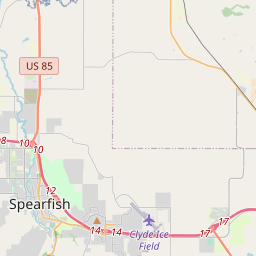Hunting Large Bison Took Teamwork and Ingenuity
Located a short distance to the east and camouflaged by the red eroded landscape is the Vore Buffalo Jump. This sinkhole served early residents as a slaughterhouse. using the natural pit as a trap, hunters would capture bison in late fall by running a herd over the edge. Once killed, the animals were butchered to provide food and supplies for winter.The Coordinated Bison Hunt
The hunters camped and made ceremonial preparations downwind and out of sight of the jump. Days before the hunt, scouts would gather 200-500 bison cows and calves a few miles from the kill site, a large here being easier to control and providing more food than a small one. To set the hunt in motion, one hunter - dressed in a bison hide to resemble a calf - would slowly decoy the herd toward the sinkhole. Dominate cows would lead the group to investigate the distressed "calf." Other hunters followed, urging the herd forward but not stampeding it until the very end. running toward the sinkhole from a curved, natural drainage ditch, the bison did not see the pit before finding themselves toppling into it. Those that survived the fall were killed by hunters waiting nearby.
The Horse Brings Change
This is one of thousands of jump sites in the West, many dating back thousands of years. making this one significant is the fact that it was used relatively late - from 1500 to 1800 - and shows evidence of the encounter of European with Plains Indian cultures. The presence of arrow points from six or more different tribes during this short period documents the social upheaval partially caused by Euro-American expansion westward. Layered 25 feet deep, the bison bones also illustrate changes in hunting and food processing practices, from the use of dogs to the use of horses as beasts of burden in moving carcasses. Introduced by Europeans, the horse revolutionized Plains Indian life. Once fully integrated into their cultures, it replaced the need of the fall bison harvest; with the aid of horses, bison could be hunted year-round.
Varves Reveal Buried Secrets
The Vore site stands out among archaeological investigations because of its dating precision. Every year rains and snowmelt wash eroded soil into the pit, burying bones and grasses. Called varves, these layers of sediment can be counted like tree rings. Not only are they used for dating, but they also witness changes in weather and other ecological events. For example, the layers are thick in wet years and thin in dry years. They show that the jump was used every five to six years, following wet years.
| HM Number | HMUMQ |
|---|---|
| Tags | |
| Marker Condition | No reports yet |
| Date Added | Monday, September 15th, 2014 at 11:17pm PDT -07:00 |






| UTM (WGS84 Datum) | 13T E 563109 N 4930790 |
|---|---|
| Decimal Degrees | 44.52768333, -104.20576667 |
| Degrees and Decimal Minutes | N 44° 31.661', W 104° 12.346' |
| Degrees, Minutes and Seconds | 44° 31' 39.66" N, 104° 12' 20.76" W |
| Driving Directions | Google Maps |
| Area Code(s) | 307 |
| Closest Postal Address | At or near 378 Co Rd 86, Beulah WY 82712, US |
| Alternative Maps | Google Maps, MapQuest, Bing Maps, Yahoo Maps, MSR Maps, OpenCycleMap, MyTopo Maps, OpenStreetMap |
Is this marker missing? Are the coordinates wrong? Do you have additional information that you would like to share with us? If so, check in.
- Is this marker part of a series?
- What historical period does the marker represent?
- What historical place does the marker represent?
- What type of marker is it?
- What class is the marker?
- What style is the marker?
- Does the marker have a number?
- What year was the marker erected?
- Who or what organization placed the marker?
- This marker needs at least one picture.
- Can this marker be seen from the road?
- Is the marker in the median?

Comments 0 comments